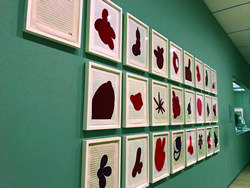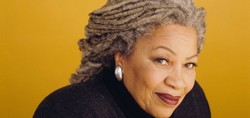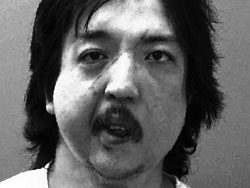Slap some color on a canvas, step back, call it a day, and sell it for $50,000. To an untrained artist, this is the process they believe professionals such as Jackson Pollock, Ad Reinhardt, and Mark Rothko practiced as a means of arriving at a valid statement.
This narrow-minded approach as to how abstract art is observed as opposed to traditional art, is what has haunted abstract artists for decades; artists as such receive a great deal of criticism today from the young urban professionals in museums.
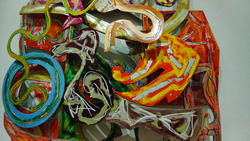 To an artist, nothing is more insulting than a blank canvas. Scott Knauer, Director of Galleries and Collections for the University’s Art Department said, “It may take hours or even days to start to see something develop, but time goes by quickly after you get the painting started.” The sustained burden of wonder hovers over the artists and demands a specific outcome.
To an artist, nothing is more insulting than a blank canvas. Scott Knauer, Director of Galleries and Collections for the University’s Art Department said, “It may take hours or even days to start to see something develop, but time goes by quickly after you get the painting started.” The sustained burden of wonder hovers over the artists and demands a specific outcome.
Producing a work of art from the heart and having it rejected is detrimental to the artist’s mindset and future creations; they present their work for the purpose of receiving feedback and gratification. The artist relies on the viewers’ impressions in order to improve; benefits sometimes include a potential buyer, although, this is not always the case.
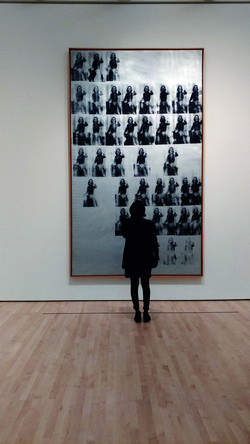 Nicki Robibero, a junior fine art student, shared her thought process on how she starts a painting: “My work has always been naturalistic. I think that in the upper level art classes there’s definitely more of an opportunity to paint however you want.”
Nicki Robibero, a junior fine art student, shared her thought process on how she starts a painting: “My work has always been naturalistic. I think that in the upper level art classes there’s definitely more of an opportunity to paint however you want.”
Classical or traditional art follows a specific set of rules: the figures represented must be depicted as they are seen in nature, and the subject is defined by its context. Within traditional art are landscapes, portraits, or still-life representations.
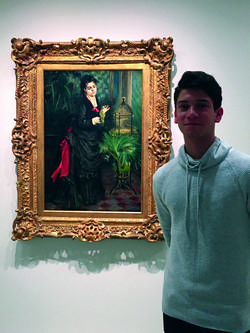 Traditional and abstract art are both used as mediums of expression; contributing artists are also involved in countless movements portraying the horrors going on in the world today such as hunger, political differences, and wildlife conservation.
Traditional and abstract art are both used as mediums of expression; contributing artists are also involved in countless movements portraying the horrors going on in the world today such as hunger, political differences, and wildlife conservation.
During the Rare Wildlife Revealed art exhibition on Feb. 9 in the Pollak art gallery, artist James Fiorentino had over 20 works on display; his hyper realistic watercolor paintings were admired by dozens of connoisseurs, potential buyers, and students.
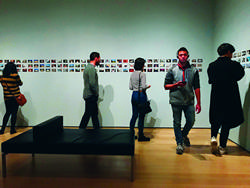 After his brief introduction and descriptive background involved with the arts, a senior fine art student, Amanda Green said, “The paintings utilized classical techniques of fine art that reflected commonplace subjects and concerns of our community. It would be harder to connect to the viewer of these concerns or message if it [the paintings] were abstract.”
After his brief introduction and descriptive background involved with the arts, a senior fine art student, Amanda Green said, “The paintings utilized classical techniques of fine art that reflected commonplace subjects and concerns of our community. It would be harder to connect to the viewer of these concerns or message if it [the paintings] were abstract.”
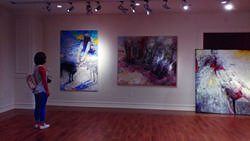 Fiorentino sold eight paintings by the end of the night, suggesting that there must be a high demand for naturalism and traditional art. However, the advocacy of this project was a large part of the night’s event and its purpose, so this may have been a factor as to why his paintings were so appealing.
Fiorentino sold eight paintings by the end of the night, suggesting that there must be a high demand for naturalism and traditional art. However, the advocacy of this project was a large part of the night’s event and its purpose, so this may have been a factor as to why his paintings were so appealing.
Traditional art is straightforward. The viewer does not have much of a choice when it comes to understanding and interpreting what the artist’s intentions were. The traditional artist forces the viewer to see the work in a specific way. When observing something that is of course not as obvious as in traditional art, we are too quick to judge a book by its cover.
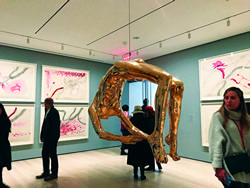 “When I’m starting a new painting, I begin by thinking about the overall composition and breaking the image down into basic shapes. From there, I continue adding more details as I see them, working inward,” Robibero added.
“When I’m starting a new painting, I begin by thinking about the overall composition and breaking the image down into basic shapes. From there, I continue adding more details as I see them, working inward,” Robibero added.
This visible part is the end result of a concept and a process, which are just as important as what the viewer sees in front of them as well as what they comprehend from it.
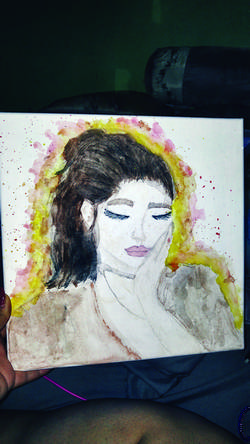 Art, in general, is simply not a process of profiting from your work for self-benefit or just creating objects that are pleasing to the eye. Art, in whatever form, is about exploring and giving meanings to existing objects or finding new, creative ways to express ideas.
Art, in general, is simply not a process of profiting from your work for self-benefit or just creating objects that are pleasing to the eye. Art, in whatever form, is about exploring and giving meanings to existing objects or finding new, creative ways to express ideas.
A junior graphic design student, Lauren Maraday shared, “If I designed or worked for the sole purpose of getting paid, I would have become a doctor. Although I started professionally selling my artwork this year through freelance, I have loved art since I was nine years old and ever since, I have grown a passion for art and design. I feel like it works with my personality.”
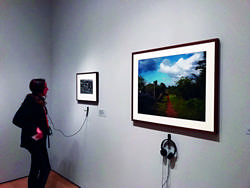 Something that we may take for granted as humans is our ability to figure out how something works, to disassemble and use our imagination as well as problem solving skills to interpret something. We throw out instructions, determined to figure out how to put the desk together and we have our Chinese food delivered to us for dinner as opposed to driving five minutes away to pick it up.
Something that we may take for granted as humans is our ability to figure out how something works, to disassemble and use our imagination as well as problem solving skills to interpret something. We throw out instructions, determined to figure out how to put the desk together and we have our Chinese food delivered to us for dinner as opposed to driving five minutes away to pick it up.
Our attention span has presumably decreased significantly as a whole over the last decade due to our technological advances and our expectations have risen exponentially. This has been applied to abstract art since the average viewer is more or less confused as to why the artist created in a vague manner.
Our overexposure of advertisements and distractions in the digital media and commercial industry has led us to be an impatient society.
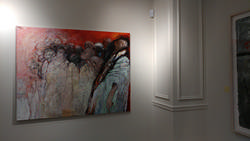 The immediate gratification and the lost ability to step back and appreciate an image for its entirety, has redirected our capability to lean into a work of art and note the fine details. Our eyes are no longer focused on one thing for a careful amount of time.
The immediate gratification and the lost ability to step back and appreciate an image for its entirety, has redirected our capability to lean into a work of art and note the fine details. Our eyes are no longer focused on one thing for a careful amount of time.
One example of abstract art is Jackson Pollock’s painting, Alchemy. The painting in its literal sense includes drips, splashes, and a cigarette butt. However, if one were to review the large canvas from afar, the viewer can decipher Pollock’s purpose reflecting his frustrations and anger toward the constraints of the art world.
Unfortunately, some cannot have the same experience with Caravaggio’s painting, Death of a Virgin from the Renaissance, since what was painted is a story that has already been told. Technique, style, hard work, and context aside, art is meant to be interpreted through the eye of those willing to accept the feeling it gives them.
Erik Hanson, a member of the graduating class of 2017, studied fine art during his years at Monmouth. He added his point of view on the topic, favoring traditional art, “Existing objects are inherently pleasing or not pleasing. Thus, we keep them the same, abstract them, or alter them to make them attractive. The definition of abstract expressionism is inherently subjective due to the transitive properties of the original definition of the word abstraction.”
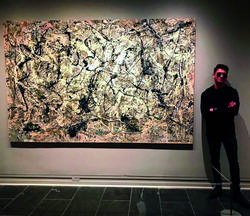 An overused inconsistency that fuels this argument is how some people favor traditional artwork over abstraction. Within abstraction, nonrepresentational art leaves interpretation up to the viewer; whereas traditional art is a definition of the identifiable.
An overused inconsistency that fuels this argument is how some people favor traditional artwork over abstraction. Within abstraction, nonrepresentational art leaves interpretation up to the viewer; whereas traditional art is a definition of the identifiable.
Abstract art is a way of communicating ideas directed toward a single and passionate expression stressing on the feeling or idea of something rather than a literal representation; traditional art represents the world in familiar images.
This was prevalent during the Renaissance with artists such as Michelangelo and Raphael painting with photorealism. Whereas Piet Mondrian and Wassily Kandinsky focused on a form’s identity in a more conceptually based proposal. The two, although vastly different, incite a contentious debate within the art community–both viewer and artist alike.
Knauer reflected on his own journey as an artist: “For me, I painted realistically with oils early on and then got into acrylics. I started working with landscapes and worked with political and social commentary as well. But rather than going for something more direct or recognizable, the color and shapes are an indication of what I thought was important to me and relayed what I wanted to do.”
Knauer is not the only artist to believe this, a sophomore graphic design student, Erin Dolan said, “I took black and white photography as a freshman, and I mainly focused on shadows and how light affects certain textures. We used 35 millimeter film cameras and knowing that you only have one chance to really pay attention and take the shot, opened my eyes to how appreciative I am toward abstract photographers like Paul Strand and Man Ray.”
Assistant professor of graphic design, Mike Richison said, “For me, objective work (figurative, landscape, etc.) seems to be more about the subject and less about the material. The artist is trying to get the viewer to think about the story that exists in the ‘picture’ or ‘image.’ I think one of the goals of some forms of abstract work is the story behind the actual material.”
It is apparent across all mediums: painting, photography, performance, and print, that abstract art searches deep within the viewer and is more of an exploration rather than an experience. When the viewer looks at traditional art, the piece does not leave room for interpretation. The technical aspect of the work is what most are drawn to and this limits their deeper thought processes. To think outside of the viewer’s comfort zone is an idea that may seem intimidating or too much of a frightening endeavor for the untrained eye. Although abstract art presents the opportunity and the effect of illusion with images to convey a reality far from the art of traditional, it is important for the viewer to recognize a similarity within traditional art and identify with the forms and with the world they reside.
PHOTOS TAKEN by Matthew Aquino, Nicole Riddle, and Alexandria Afanador

